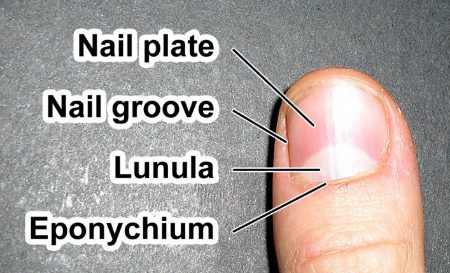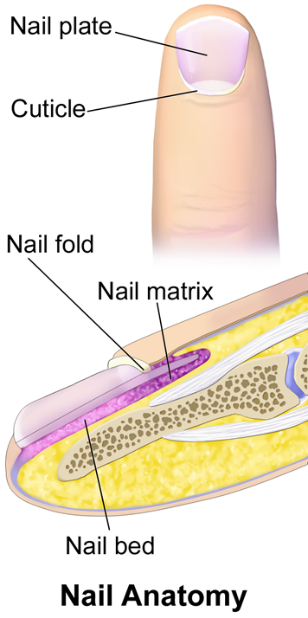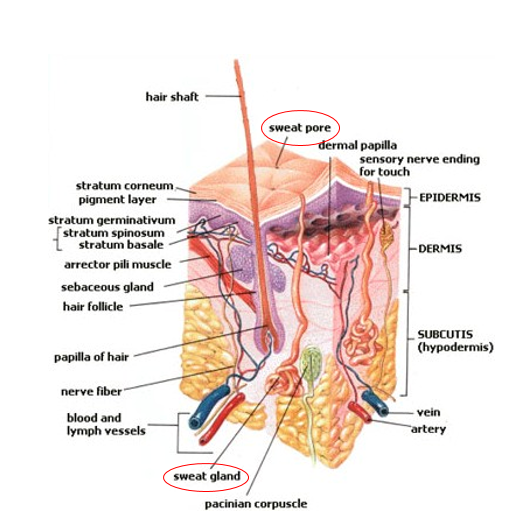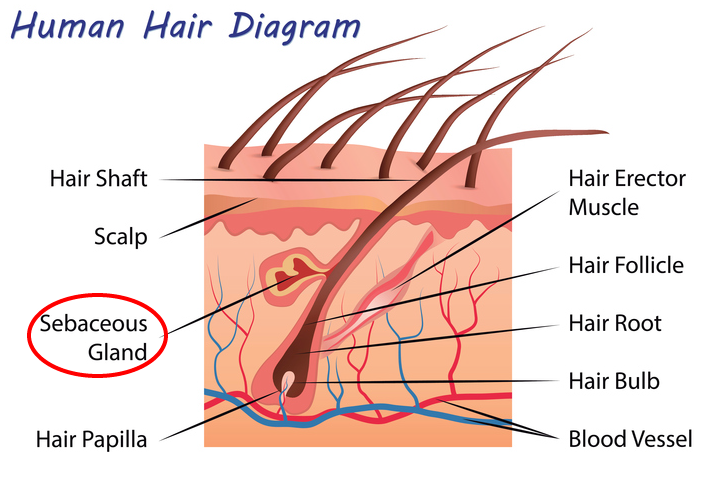Learn

 Nails
Nails
The nail bed is a specialized structure of the epidermis that is found at the tips of our fingers and toes. The nail body (or nail plate) is formed on the nail bed, and it protects the tips of fingers and toes as they experience the mechanical stress.
The lunula is the half-moon shaped, white area on a nail caused by a thick layer of epithelium over the nail matrix.
The cuticle (or eponychium) helps anchor the nail body.
The matrix is the region of the nails where there are dividing cells and nail growth occurs.
The nail plate (or nail body) rests on the nail bed.
The nail root is the proximal portion of the nail that is underneath skin.
The nail fold overlaps the nail on the sides, helping to anchor the nail body.



![]() Check Your Understanding:
Check Your Understanding:
1. New growth for the nails occurs at the free edge of the nail. True or False?

 Sweat Glands
Sweat Glands

Sweat glands (see the area of the image circled in red and black) develop from epidermal projections into the dermis and are classified as merocrine glands the secretions are excreted by exocytosis through a duct without affecting the cells of the gland. Sweat glands release sweat, and, in doing so, release wastes and heat. There are 2 types of sweat glands, each secreting different products:
- Eccrine sweat glands - these glands are a primary component of thermoregulation in humans. This type of gland produces a hypotonic sweat composed mostly of water, with some salt, antibodies, traces of metabolic waste, and an antimicrobial.
- Apocrine sweat glands - these glands are associated with hair follicles in the armpits and genital regions. Apocrine glands secrete water, salt, and organic compounds that make the sweat thicker and subject to bacterial decomposition and subsequent smell. The release of this sweat is under both nervous and hormonal control. Most commercial antiperspirants use an aluminum-based compound as their primary active ingredient to stop sweat. Antiperspirant applied to the body enters the sweat gland duct and physically blocks the duct, which prevents sweat from coming out of the pore.
![]() Check Your Understanding:
Check Your Understanding:
1. Which type of sweat gland is being described? These sweat glands are found in the armpits and produce a thicker sweat that is associated with odor as bacteria breaks it down.

 Oil Glands
Oil Glands
Oil Glands of the skin include the sebaceous glands (see area of image circled in red) that are found all over the body. These glands release sebum, a mixture of lipids, that lubricate and waterproof the skin and hair. The fatty acids of sebum also have antibacterial properties. Sebum secretion is stimulated by hormones, many of which do not become active until puberty.
![]() Check Your Understanding:
Check Your Understanding:
1. Sebaceous glands secrete a lipid mixture that lubricates and waterproofs the skin. This secretion is termed ________.


